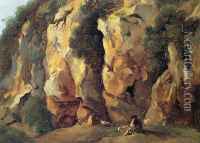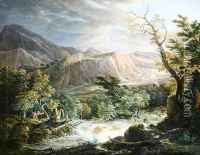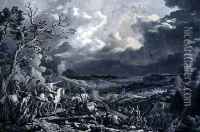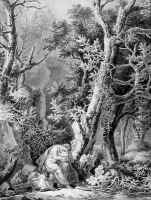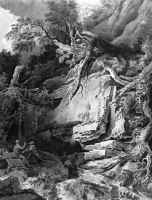Jean Antoine Constantin Paintings
Jean Antoine Constantin, also known as Jean Antoine Constantin d'Aix due to his association with the city of Aix-en-Provence, was a notable French landscape painter born in 1756. His artistic journey and contribution to the world of art spanned the late 18th and early 19th centuries, a period that witnessed significant transformations in the European art scene. Constantin's work is particularly remarkable for its detailed and sensitive portrayal of natural landscapes, which not only captured the beauty of the French countryside but also reflected the evolving tastes and sensibilities of his era.
Constantin's early life and training are somewhat obscured by the passage of time, but it is known that he was active in Aix-en-Provence, a hub of artistic activity in southern France. His style was deeply influenced by the classical landscape tradition, which he managed to infuse with a sense of immediacy and naturalism. Unlike many of his contemporaries who ventured into the realms of romanticism, Constantin remained committed to depicting the serene beauty of nature, often focusing on the rugged landscapes of Provence with a meticulous eye for detail and a profound appreciation for the region's unique light and color.
Throughout his career, Constantin exhibited a remarkable ability to capture the nuances of natural scenery, from the lush valleys and rivers of the French countryside to the dramatic cliffs and coastlines of Provence. His works are characterized by their delicate brushwork, balanced compositions, and a palette that subtly conveys the changing moods of the landscapes he portrayed. Although he never achieved the fame of some of his contemporaries, his contribution to the landscape genre was significant, and his paintings continue to be appreciated for their beauty and technical skill.
Jean Antoine Constantin's legacy is preserved in several French museums, including the Musée Granet in Aix-en-Provence, which houses a collection of his works. Despite the challenges of his time, including the political upheavals of the French Revolution and the Napoleonic Wars, Constantin remained dedicated to his art, leaving behind a body of work that continues to inspire and enchant viewers with its timeless appeal. He passed away in 1844, leaving a lasting impact on the tradition of landscape painting in France.
